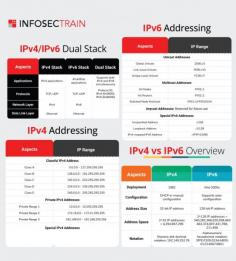
IPv4 (Internet Protocol Version 4) and IPv6 (Internet Protocol Version 6) are the two versions of the Internet Protocol used to identify devices on a network. IPv4, the older version, uses a 32-bit addressing scheme, allowing for approximately 4.3 billion unique addresses. However, with the explosive growth of the internet and connected devices, IPv4 addresses have become scarce. In contrast, IPv6 was developed to address this limitation by using a 128-bit addressing system, which supports an almost limitless number of unique addresses—about 340 undecillion.

